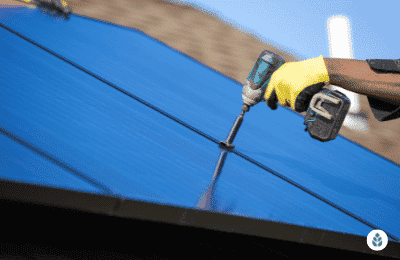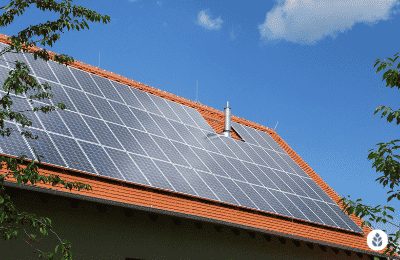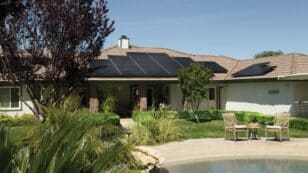
Top 5 Best Solar Companies in Montana (2024 Reviews)
In this guide to choosing the best solar panel installation company in Montana, you’ll learn:
- What are the most reliable solar installers in Montana?
- Can solar incentives in Montana help you save when switching to clean energy?
- Is DIY solar panel installation a good idea in Montana, and will it save you money?
Each product and or company featured here has been independently selected by the writer. You can learn more about our review methodology here. If you make a purchase using the links included, we may earn commission.
What Are Montana’s Top 5 Solar Energy Companies?
According to the Solar Energy Industries Association (SEIA), Montana is home to 21 different solar installers.1 Although this pales in comparison to states like California and Texas, where solar adoption is far more prevalent, it still makes choosing a solar provider time-consuming.
To help you narrow down your options, we’ve reviewed the best solar installers available in your area and have ranked them based on the value they bring to Montanans, specifically. Below is a quick ranking of our top picks:
- OnSite Energy: Outstanding Social Impact
- SBS Solar: Outstanding Local Installer
- Solar IPS: Solar Veteran
- Harvest Solar MT: Outstanding Regional Installer
- Big Sky Solar: Outstanding Local Installer
You can get more information about these companies to help you choose the best one for your purposes in the drop-down menus below.

OnSite Energy

Local Service
Average cost
Pros
- Excellent reputation
- Great warranty coverage
- Offers products from leading manufacturers
- Certified B Corp
Cons
- No leases or PPAs
- Slightly expensive
We chose OnSite as one of our top providers in Montana for a few reasons, including its high-efficiency panel brands, lengthy warranties and positive impact on the local solar community.
OnSite carries some of the leading solar equipment brands that boast above-average panel durability and efficiency levels, such as REC. A high efficiency rating is massively beneficial in Montana, where residents see well below the average amount of sunshine per year.2 High-efficiency panels make the most of the sunlight that does hit the state, boosting savings.
OnSite also provides solar warranties that help protect systems from damages related to poor installation. It provides between 12 and 25 years of coverage for workmanship, equipment and panel performance. The workmanship warranty, in particular, is helpful in Montana, as above-average snowfall and rainfall can lead to roof leaks if installation isn’t done properly. That coverage is above the industry average of 10 years, and the panel and performance coverage is in line with the standard.
This company is also a certified B Corp that makes charitable donations to local conservation efforts and organizations. As such, it has a positive impact on the local solar industry and its surrounding community.
OnSite is a certified Powerwall installer, as well. This isn’t terribly important now, as the main financial benefit of batteries comes from the effective net metering they provide, and Montana residents have access to a stellar net metering policy. However, net metering credits have been in decline across the country, and in the coming years, we expect the policy in your area to get downgraded or discontinued. If and when that happens, batteries will likely become a necessity for seeing a significant return on your solar array. As such, we’re happy that OnSite already offers battery installations.
OnSite is a bit on the expensive side, coming in above the typical cost per watt of $3.22 in Montana, but we believe the peace of mind you get from its quality makes it worth the investment.
Facts and Figures: OnSite Energy
| EcoWatch Rating |
|---|
| Better Business Bureau (BBB) Rating |
| Average Cost ($-$$$$$) |
| Solar Services |
| 5 |
| A+ |
| $$$$ |
| Solar Panels, Solar Batteries, EV Chargers, Off-Grid Solar Solutions, Community Solar, Maintenance & Repairs |

SBS Solar

Local Service
Average cost
Pros
- Outstanding customer service
- Full-service home energy solutions
- Great warranty coverage
Cons
- No leases or PPAs
- Limited brands of solar equipment available
SBS Solar is a smaller, local installer that’s based in Missoula. Despite being a local company, which are typically more expensive, SBS Solar maintains pricing that is well below the average for the area. Lower upfront costs mean a faster panel payback period, which is great in places like Montana, where the payback period is normally a bit above average — 13 years as opposed to the national average of 11 years.
SBS Solar carries a small selection of tier-one panel brands, but they should all provide plenty of efficiency to make maximum use of the available sunlight in Montana. These brands include options like Canadian Solar and Yingli.
In addition to panels, SBS Solar offers LG Chem batteries, which is one of the leading options in the industry behind the Tesla Powerwall. Again, batteries are more of a luxury now that just provide power through blackouts, but in the future, if and when the Montana net metering policy declines or goes away, batteries will likely become more of a necessity. We try to promote companies that offer future-proof systems, like SBS.
SBS also offers a 25-year warranty for the equipment and panel production. While this doesn’t include a workmanship warranty, the production guarantee is great to have, as it ensures your panels continue to function as intended and provide value even though the available sunlight is minimal.
It’s a shame that SBS Solar doesn’t have a workmanship warranty, but we’re still comfortable recommending this company because of the affordable pricing and the 10+ years of local experience its technicians have.
Facts and Figures: SBS Solar
| EcoWatch Rating |
|---|
| Better Business Bureau (BBB) Rating |
| Average Cost ($-$$$$$) |
| Solar Services |
| 4.5 |
| Not Rated |
| $ |
| Solar Panels, Solar Batteries, EV Chargers, Maintenance & Repairs, Energy-Efficiency Audits |

Solar IPS
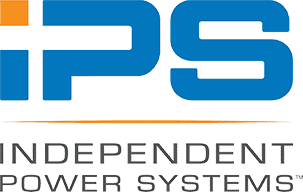
Regional Service
Average cost
Pros
- Offers products from leading manufacturers
- Great warranty coverage
- Many financing options
Cons
- Some reported communication issues
- Slightly limited service offerings
Solar IPS — which stands for Independent Power Systems — is one of our top choices in Montana primarily because of the panels it offers. It installs SunPower panels, which have the highest efficiency rating — up to 22.7% as opposed to the industry average of 20% — of any panel on the market. Efficiency is vital in Montana, as you want to make the most of the limited sunlight in the region.
SunPower panels from Solar IPS come with one of the best warranty packages in the solar industry. The warranty covers the equipment, the efficiency and the workmanship for the installation for an incredible 40 years. This is well beyond what any other installer in the industry offers, and it’s particularly welcome in Montana, where system costs near $30,000 before incentives, as they help ensure your large investment in clean energy remains protected.
The efficiency and workmanship warranties, in particular, are useful in Montana. The efficiency warranty helps maintain maximum power production to keep your energy savings up despite the lack of sunlight. The workmanship warranty helps prevent roof leaks, which are more common in Montana than in many other states due to the above-average snowfall.3
Solar IPS doesn’t have the best selection of services available, as it only offers panel and battery installations and system maintenance. However, since these offerings will suffice for most homeowners, we still feel confident in recommending this provider. Plus, the options for batteries from Solar IPS are great to see, and we expect they will be even more welcome if and when net metering rates drop in the state or disappear altogether. At that point, batteries are going to become an integral part of solar arrays.
Facts and Figures: Solar IPS
| EcoWatch Rating |
|---|
| Better Business Bureau (BBB) Rating |
| Average Cost ($-$$$$$) |
| Solar Services |
| 4.5 |
| A+ |
| $ |
| Solar Panels, Solar Batteries, Maintenance & Repairs |

Harvest Solar MT

Regional Service
Average cost
Pros
- Outstanding customer service
- Locally owned and operated
- Representatives are experts on local policies
Cons
- Limited warranty coverage
- Slightly limited service offerings
- No leases or PPAs
Harvest Solar MT is a great option for Montana homeowners looking for outstanding customer service. This Bozeman-based installer provides constant communication throughout the installation process and takes an educational approach to solar sales. This is uncommon in an area like Montana, where the demand and competition are relatively low.
Harvest Solar carries some top-tier solar panel brands that should provide high enough efficiency to offset the lack of sunlight in Montana. These include Canadian Solar and SolarWorld, which also come with great product warranties.
As a smaller, local company, Harvest Solar MT is able to provide assistance for solar customers when taking advantage of local solar benefit programs. This can help bring down the cost of converting to clean energy even further, which is great news in an area like Montana, where the panel payback period takes longer than the average state.
Unfortunately, Harvest Solar only provides the manufacturer’s warranty for its solar equipment. However, the local experience this installer has means the installation is likely to be professional and shouldn’t lead to any major issues.
Harvest Solar is another provider that installs solar batteries, so it’s likely to be even more beneficial to go with them in the future when net metering gets downgraded. It installs Tesla Powerwalls, which are the industry’s most popular battery option.
Facts and Figures: Harvest Solar MT
| EcoWatch Rating |
|---|
| Better Business Bureau (BBB) Rating |
| Average Cost ($-$$$$$) |
| Solar Services |
| 4 |
| A+ |
| $$$ |
| Solar Panels, Solar Batteries |

Big Sky Solar
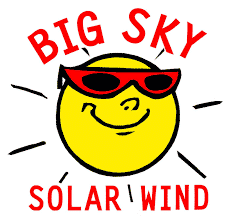
Local Service
Average cost
Pros
- Many years of experience
- Outstanding customer service
- Good warranties for equipment and labor
Cons
- No power production warranty
- No leases or PPAs
Big Sky Solar is an outstanding option for solar installations in Montana, in our opinion, primarily because it offers a lengthy 25-year warranty for workmanship. This is a rarity in the Big Sky State, but it’s great for extra protection against the elements and 2.5x the industry average.
Big Sky Solar carries just a handful of solar brands, so the selection is limited. However, the brands it does offer — including Panasonic and QCells — have above-average efficiency ratings. These options are ideal in Montana, as they can make use of the minimal sunlight that is available and still offset electric bills.
Big Sky Solar is a smaller, local company based in Missoula, MT. It has years of experience operating in Montana, specifically, so it understands the needs of local homeowners and can design a system that’s a perfect fit for your home.
This installer doesn’t offer any warranty for the panel efficiency (which degrades over time), so make sure you select a solar panel brand that does come with efficiency protection (like Panasonic).
Big Sky Solar installs panels, as well as EV chargers and battery backup systems. While EVs aren’t terribly popular in Montana yet, they are expected to become more prevalent, which means access to at-home chargers is a nice perk. Additionally, we love to see batteries being offered because it means customers who choose this provider even if the net metering program in the state declines or disappears can still see substantial solar savings over time.
Facts and Figures: Big Sky Solar
| EcoWatch Rating |
|---|
| Better Business Bureau (BBB) Rating |
| Average Cost ($-$$$$$) |
| Solar Services |
| 3.5 |
| Not Rated |
| $$$ |
| Solar Panels, Solar Batteries, EV Chargers |
Watch Below: Learn What To Know Before Going Solar in Montana
How Can You Save Money When Hiring A Solar Company In Montana
The average all-in cost to convert to solar in Montana is around $28,980, which doesn’t take any rebates or benefit programs into consideration. After the solar tax credit, the average cost is closer to $20,286. This total is based on the average per-watt cost for photovoltaic (PV) equipment in Montana — around $3.22, which is below the national average of $3.33 — and the typical system size required to offset energy bills in the state — around 9 kilowatts (kW).
While this total is right around the national average, it’s still too much for many residents to pay upfront in cash. Thankfully, there are a few things you can do to make your system a bit more affordable while maintaining your long-term savings. These include:
- Taking advantage of the solar benefit programs available to you
- Investing in a high-efficiency panel brand
- Choosing a solar contractor that offers solid warranty coverage
We’ll include some information on how these tips can save you money upfront and over time in the sections below.
Take Advantage of Solar Incentives
Your most substantial short-term solar savings will likely come from taking advantage of solar benefit programs. Montana only has a few perks available, but they can still bring down your effective system costs by thousands. We’ll include a quick breakdown of the solar incentives available in Montana in the table below.
| Solar Benefit Program | Program Description |
| Federal Solar Investment Tax Credit (ITC) | This is a tax credit offered by the federal government to bring down your effective system costs. The credit amount is equal to 30% of your entire conversion cost, including labor, panels, inverters and batteries. In MT, the federal tax credit averages out to $8,694 and gets credited to your income taxes owed for the year you install your system. Any unused credit can be rolled over for five years. |
| Renewable Energy Systems Exemption | This is a property tax exemption that prevents your taxes from increasing just because you install PV equipment. Most home improvements that boost your property value would drive up your taxes, but this exemption prevents that from happening with solar systems. |
| Alternative Energy Revolving Loan Program | This is a solar financing program offered by the Montana Department of Environmental Quality. Using this program, you can finance up to $40,000 at below-average interest rates to keep your upfront costs and your long-term system costs to a minimum. |
| Net Metering | Net energy metering is a massively beneficial solar perk that lets you overproduce energy with your system and credits you for all the excess. If you ever need to pull power from the electric grid, you can call on those credits instead to keep your costs down. Net energy metering is mandated for all utility companies in Montana, but the rate at which you’re credited for excess power varies by provider. |
For more information on how to save money on your MT solar system using incentives, you can check out our guide to solar benefit programs in Montana.
Choose a Panel Brand With a High Efficiency
Next, we recommend choosing an installer that carries high-efficiency solar panels. Each PV panel brand has a different efficiency rating, which denotes the amount of available sunlight it can convert to electricity. Efficiency ratings over 20% are considered high-efficiency.
As we’ve mentioned, efficiency is key in Montana because the state receives well below the average amount of sunshine — 189 as compared to 205 throughout the rest of the country.4 Where sunlight is less prevalent, solar power production will naturally be below average as well.
A high-efficiency panel brand can make the most use of the available sunlight, which means it can maximize your energy savings each month, regardless of the weather conditions.
Panel brands like SunPower, Tesla, REC, Canadian Solar, Qcells and Panasonic all work well in lower-sunlight areas, as they provide above-average efficiency ratings that can help offset your energy bills.
Pick an Installer That Includes Lengthy Warranty Coverage
Next, we suggest prioritizing installers that offer above-average warranty protection on their solar equipment and labor. The industry standards for warranty protection — which you can use to compare companies — are as follows:
- 25 years for equipment
- 20 to 25 years for panel efficiency
- 10 years for workmanship
In our opinion, the efficiency and workmanship warranties are the most crucial in the state. Efficiency warranties guarantee that your panels continue to produce power, even through the low-sun conditions in Montana.
Maximizing your production with high-efficiency panels also means you’re more likely to offset losses during snow coverage. This is a big deal in Montana, where the average annual snowfall is nearly double the national average.5
The workmanship warranty will help ensure you get a competent installer that won’t rush the installation process or make errors. Ultimately, this can save you from expensive roof leaks, given the above-average precipitation. You might pay more for warranty coverage upfront, but it can often save you money in the long run.
Consider Batteries Carefully
We’ve mentioned already that Montana currently mandates net metering for residents, which is a huge deal and drastically improves the overall value of your solar array. If you go solar now and get the full retail rate for your exported electricity, we recommend avoiding batteries. Batteries cost between $10,000 and $20,000 in most cases, and while they provide the benefit of not losing power in an outage, they’re more of a luxury item than they are a necessity. You can save quite a lot of money by passing on them.
However, that will change if the net metering policy gets downgraded or discontinued, which is happening in many other states. For example, California — long known as the most solar-friendly state — rolled out net metering 3.0 in 2023, which decreased the credit rate for exported energy by about 75%. Over night, new solar installations became far less valuable UNLESS they included batteries, which drove up installation costs by up to $20,000 or more.
We expect the same fate to befall NEM policies in other states, including Montana. If that happens, then solar batteries will very likely come with a major financial benefit as well and drive up long-term savings, as they provide effective one-to-one net metering.
Now is the best time to go solar in Montana and lock in the retail rate for excess energy production. But if the rate changes by the time you’re ready to install panels, we recommend speaking with one of the reputable installers above to see if batteries would benefit you.
See Also: Calculate How Much You Can Save By Going Solar
Will Solar Increase Your Home Value In Montana?
Yes! Installing PV panels might be expensive upfront, but most solar customers see a significant bump in property value as a result, making conversion even more worthwhile.
Research from Zillow suggests that PV equipment will boost your property value by around 4.1%.6 In Montana, where the average home costs around $442,052 (as of January 2024), that’s a value increase of just over $18,124.7
Some cities are expected to see an even greater value increase due to local solar adoption rates and greater acceptance of PV equipment. For example, Missoula has partnered with the Department of Energy (DOE) and the Montana Renewable Energy Association to bring more awareness to renewable energy.8 This ultimately helps make solar more valuable in the area.
Should Montana Residents Hire a Professional Solar Installer Or DIY?
Since the cost to go solar via a professional is so costly, many aspiring solar customers wonder if a DIY panel installation is a good option. While installing your solar power system yourself is almost always cheaper — an average of $15,000 as compared to $29,000 — it’s not a great idea for most Montanans.
There are a few reasons for this, including:
- No workmanship warranty with DIY installations
- Limited panel efficiency and efficiency guarantees
- Higher risk of property damage with DIY installations
We’ll explain why we believe these downsides aren’t worth the cost savings of a DIY installation in the sections below.
DIY Solar Installations Don’t Come With a Workmanship Warranty
In our opinion, the most significant downside to installing your panels yourself is that you don’t get a warranty for the workmanship. Professionally-installed solar electric systems typically come with a 10-year warranty for the labor, and the best companies offer 25 years of coverage or more.
Montana homes, and the solar systems installed on them, are exposed to harsh elements year-round. You might save $15,000 or so installing your solar energy system yourself, but if you make an error that results in a roof leak, you could end up paying far more than that in repairs and system replacement.
In our opinion, it’s a much better idea to have a professional complete the installation properly the first time around. That can end up saving you money but also provides you with peace of mind for decades after your panels are installed.
DIY Panels Aren’t As Efficient
In addition to DIY panels having less appealing warranty coverage, the panels themselves just aren’t as efficient. Most professionally-installed panel brands have efficiency ratings of over 20% and top out at around 22.7%. DIY panel brands usually average between 15% and 18%.
These seemingly minor differences in efficiency can mean major variances in power production in similar conditions. Maximizing your panel efficiency is important no matter where you live, but especially in Montana, where the available sunlight is already below average. High-quality brands can help save you more by offsetting more of your utility bills. In short, more efficient panels provide far more energy savings in the long run.
DIYers Are More Likely to Make Mistakes, Leading to Property Damage
Finally, mistakes are more common among DIY solar projects because of the lack of experience on the part of the installer.
Issues with roof penetration and sealing during installation can lead to roof leaks, water damage or interior mold growth, all of which are expensive to fix. Paying a professional for high-quality service and years of experience leaves you less prone to roof leaks and other issues stemming from improper installation techniques.
Your roof is the most important aspect of your home — and the heavy snowfall in Montana will be more likely to expose leaks and other issues than in warmer states. Professional installations can help mitigate your risk and save you money over time.
What Should Montana Residents Look For in a Solar Installer?
Choosing the right solar installer means maximizing your energy savings and getting a system that fits into your budget and can offset your energy bills. There are a few things we recommend you look for in a solar provider in Montana, specifically. These include:
- A lengthy workmanship warranty
- Access to the best solar panel brands
- Extensive local experience
We’ll explain why we recommend prioritizing these characteristics in the sections below.
Robust Workmanship Warranty
First off, we suggest choosing an installer that offers a lengthy workmanship warranty. Solar installations require roof penetrations, which naturally leave your home prone to roof leaks if performed improperly. This is more of a risk in Montana than in most other states because of the above-average amounts of rainfall and snowfall the state gets each year.
Choosing a company that offers a lengthy workmanship warranty — ten or more years — will help reduce the risk of a poor installation and property damage, saving you money and providing peace of mind.
Equipment Brands
Next, we suggest choosing an installer that provides access to highly-efficient, durable solar panel brands. A solar panel with a high efficiency rating will generate more electricity in all situations. This is beneficial for Montana residents for two primary reasons:
- The state receives fewer sunny days than most others, so efficient panels can make use of cloudy days and what little sun is available and still offset electric bills.
- Montana sees about double the national average amount of snowfall each year. Snow can cover panels and lower power production for days at a time. High-efficiency equipment will maximize your production when the sun is available, which can help offset losses from snow coverage.
In the future, battery offerings are another consideration you should make, as they can act as a stand-in for net metering policies once they dip or disappear.
Local Experience
Finally, we recommend choosing a solar company that has at least five years of experience working in Montana. Solar adoption is just beginning to pick up in the area, so we’re seeing more and more inexperienced companies popping up to capitalize on the demand.
Less experienced companies are more likely to make mistakes and run into issues that can leave you more susceptible to property or system damage over time. Choosing an experienced installer helps avoid this risk.
Methodology: How We Ranked Montana’s Solar Companies
Our goal in ranking solar providers in Montana is to provide you with the best installers in your area that are likely to meet your specific needs. In pursuit of that goal, we rate companies based on a few key criteria and evaluate each factor based on how important we believe it is in Montana, specifically.
Below are the factors we use and the weighting system we apply to rank Montana solar companies:
- Solar Warranty & Customer Support (20%)
- Availability (20%)
- Price & Solar Financing Options (20%)
- Experience (15%)
- Solar Services (15%)
- Qualifications, Reputation & Certifications (10%)
- Environmental, Social and Corporate Governance Factors (10%)
Most importantly, we never let our methodology get affected by commercial partnerships, and we tailor our rankings based on the state in which we’re rating installers. We’ll explain each of the criteria for Montana’s solar companies in the sections below.
Solar Warranty & Customer Support
First, we assess each installer based on the warranty coverage it offers and the customer support and response times to warranty claims it has. We prioritize workmanship warranties — due to the above-average rain and snow in the area — and efficiency warranties — due to the below-average sunlight in the area.
A company gets a perfect score if it provides the following:
- 25 years of coverage or more for equipment
- 20 to 25 years or more for panel efficiency
- 10 years or more for workmanship
Installers that provide lengthier warranty coverage — like Solar IPS — get ranked higher.
Availability
Montana is largely rural, which means the demand for solar conversions diminishes significantly as you move away from the larger cities. A good portion of the installers in the state serve only certain cities or sections of the state.
Naturally, companies that service the entire state will appeal to more of our readers, so we rank those installers higher.
Price & Financing Options
The solar installation cost in Montana averages over $28,000 before any rebates or state tax credits, which is prohibitively expensive for many residents. To help connect you with companies that are more likely to fit into your budget, we rank installers higher if they manage to keep prices below average.
We also look at the financing options available from each installer. A company that only accepts cash purchases and third-party solar loans will naturally exclude customers who can only afford — or just prefer — a solar lease or PPA. Companies that offer flexible, numerous financing options will rank the highest in this category.
Experience in Montana
Experience in a solar installer is always beneficial, as a company that is accustomed to installing solar in your area is more likely to provide a system that suits your energy needs. Experience working in Montana’s climate helps set apart companies that are in tune with local weather conditions that make roof leaks and panel damage more prevalent.
Companies that have at least five years of experience in the solar industry and Montana get an average score in this category. Those with ten or more years get perfect scores.
Solar Services
Many Montana residents just install solar panels for grid-tied solar. Unfortunately, panels alone won’t let you maximize your returns in states like Montana, where net energy metering credits aren’t offered at the retail rate. Plus, installing only panels means you’ll still lose power during outages.
For these two reasons, many residents choose to install solar batteries as well. Companies that offer panel and battery installations, along with energy audits, score an average rating in this category.
Those that offer additional services — like solar water heaters, solar roof shingle installations and other energy efficiency upgrades will appeal to even more customers and get ranked higher.
Qualifications, Reputation & Certifications
Since the solar industry is just starting to pick up in Montana, we strive to differentiate companies that have sufficient experience to carry out a safe solar installation from those that may rush the process to turn a greater profit. To do that, we look for company qualifications and certifications above and beyond the requirements.
Some things we look for, in particular, include:
- NABCEP certified (North American Board of Certified Energy Practitioners)
- Certification from the Leadership in Energy and Environmental Design (LEED)
- BBB accreditation
- 100+ positive 4-star solar reviews and positive testimonials on Google
- Certification from the Building Performance Institute (BPI)
Additionally, we take points away from companies if they have a history of customer lawsuits or complaints with the BBB.
Environmental, Social & Corporate Governance Factors
Finally, we look for evidence that the company is carrying out a mission statement that aligns with the progression of the solar industry as a whole. Some things we look for that suggest this include:
- Public data disclosure
- Affiliations with local solar organizations
- A commitment to providing affordable solar solutions to low-income households
- A system for helping recycle old PV panels and other solar products
The cost information presented in this article is derived from a comprehensive analysis, incorporating data from multiple industry sources. The average cost per watt per state was calculated based on figures from Consumer Affairs, Energy Sage, and Berkeley Lab’s Electricity Markets & Policy Department. Additionally, monthly energy consumption and the average monthly cost of electricity were sourced from the U.S. Energy Information Administration, ensuring a well-rounded and accurate representation of the information presented.
FAQ: The Best Solar Companies in Montana
Below, we’ll answer some of the questions we get about choosing a solar company from other Montana residents like you.
Based on our reviews of the top solar companies in Montana, we have found that OnSite Energy is the most reputable. This company has a great range of products and installation services available at affordable prices, all of which are covered by the robust warranties Montana residents need. Best of all, OnSite is a certified B Corp and has an unblemished reputation for phenomenal customer service. Most homeowners who choose this installer are pleased that they went with such a reputable company.
There are many factors to consider when choosing a Montana solar installation company. Most residents agree that warranty coverage for power production is one of the most crucial things to think about. Additionally, you’ll want to consider the overall price, value for the cost, and the company’s commitment to customer service and communication before, during, and after installation.
The Solar Energy Industries Association (SEIA) reports that there are 30 solar companies based in Montana. Of these 30, 21 provide solar installation services.9
Related articles
Top Solar Installers in Montana Cities
Comparing authorized solar partners
-
- Excellent reputation
- Great warranty coverage
- Offers products from leading manufacturers
- Certified B Corp
- No leases or PPAs
- Slightly expensive
A+Outstanding Social Impact
Having trouble deciding? Click below and use our process to receive multiple quotes instead:

 233k
233k  41k
41k  Subscribe
Subscribe 
